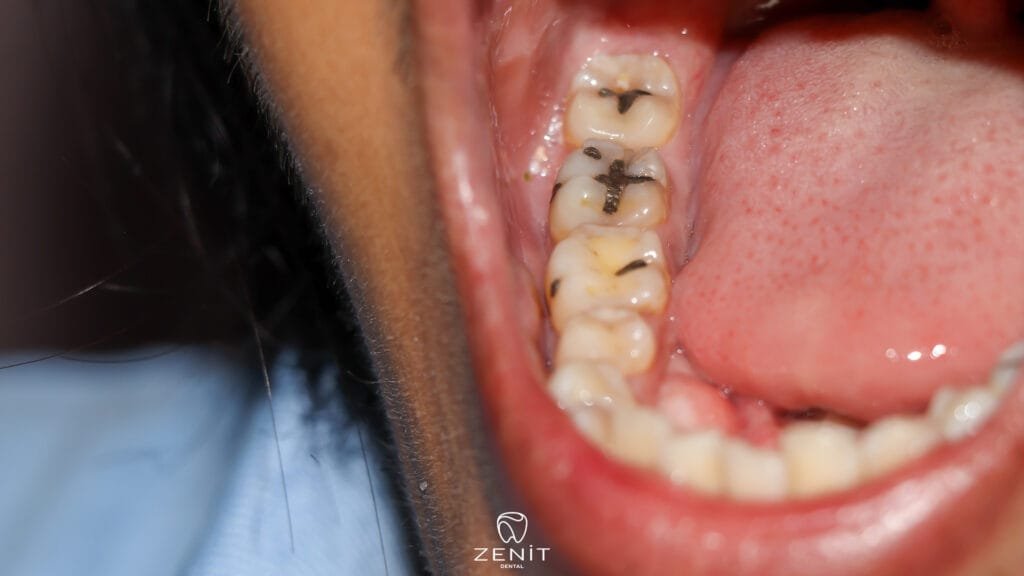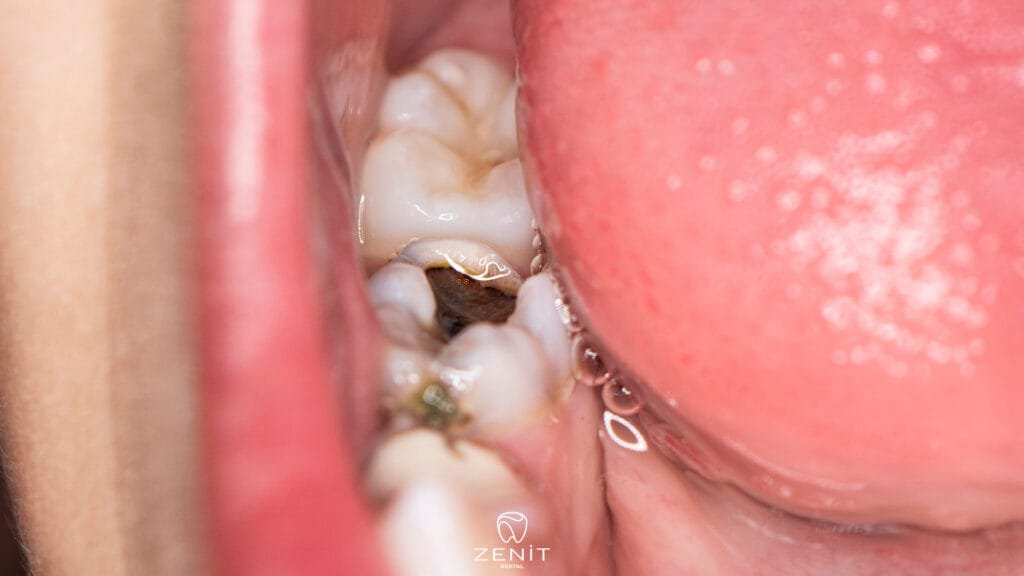Why Do Our Teeth Decay?
Our smile is like an invisible bridge between us and others. A smile can convey more than even long sentences can. It instills trust in the other person, demonstrates our sincerity, and reflects our inner world. But unfortunately, something overshadows this warm smile, clouding that radiance: tooth decay.
Have you ever wondered why our teeth decay? Why do some people’s teeth remain pristine white and strong for years, while others struggle with cavities even with regular brushing? Perhaps you’re one of those people, lamenting, “I brush my teeth every day, yet I still have a cavity!” You’re not alone. Tooth decay isn’t just a matter of hygiene; it’s a complex process involving a multitude of factors, from diet and saliva to genetics and lifestyle habits.
Every bite we eat and every sip we drink throughout the day actually comes into contact with our teeth. A sweet cake, our morning coffee, even fruit juices we might consider “harmless” can cause subtle damage to tooth enamel. This damage often begins silently. At first, you’ll experience a slight sensitivity in your teeth, perhaps a brief tingle when you’re sensitive to hot or cold, but you dismiss it as a fleeting sensation. By then, however, a tiny colony of bacteria has already begun working on the surface of your teeth.
Over time, these bacteria convert the remaining sugars in your mouth into acids, which slowly erode tooth enamel. Like water dripping onto a rock, they progress patiently and unnoticed. One day, you might look in the mirror and see a small black spot, or you’ll feel a sudden pain when you bite your tooth. By then, it might be too late to say, “I wish I’d been more careful.”
Tooth decay isn’t just an aesthetic issue. It can lead to a host of problems, from bad breath to tooth loss, from chewing difficulties to overall health issues. Furthermore, the causes of cavities aren’t always the same. Improper brushing, poor nutrition, and neglecting regular dental checkups can accelerate this process.

What is Tooth Decay?
In its simplest form, tooth decay is a process that begins with the damage to the tooth enamel. Enamel, located on the outer surface of the tooth, is actually one of the hardest tissues in our body. It’s even more resilient than bone. However, even this strong structure can succumb over time to its enemy: acids.
Bacteria in the mouth use the sugars in the foods we eat to produce acids. These acids initially cause tiny abrasions on the tooth surface. Initially, they’re unnoticeable; there’s no pain or visible staining. But as this silent process continues, it begins to affect the dentin, the layer beneath the enamel. Dentin is much more sensitive than enamel. From that point on, things change you feel a “tiny tingle” when you drink hot coffee, rinse your mouth with cold water, or eat something sweet. That tingle is your tooth’s cry for help.
Over time, this decay deepens, and bacteria can reach the nerve tissue (pulp) inside the tooth. From that point on, the pain becomes unbearable; sometimes it manifests as a throbbing pain in your head or ear, and sometimes it’s so severe it wakes you up at night.
So, Where Does This Acid Come From?
The source of that insidious acid that damages our teeth isn’t as far away as we think; it lives right in our mouths! Yes, you heard that right. The oral environment is home to millions of different bacteria. Some of these are harmless, even beneficial; they maintain oral balance and aid digestion. But there’s one group among them that is the greatest enemy of dental health. Streptococcus mutans, in particular, is a pest of tooth enamel.
These bacteria are constantly at work, without you even realizing it. And when something sugary gets into your mouth—a piece of chocolate, a sip of fruit juice, or that favorite soda—they immediately get to work. They break down the sugar and begin producing acid. And this acid, like fine but powerful sandpaper, gradually erodes tooth enamel.
You might not feel a thing at first. You might think, “What’s the big deal? I only had one sweet.” But those acids continue to attack your teeth for about 20 to 30 minutes after each snack. So, if you snack several times a day, your teeth are essentially being subjected to mini acid bombardments throughout the day.
Over time, these attacks begin to dissolve the minerals in your tooth enamel. The enamel weakens and thins, and eventually, those tiny holes become what’s known as cavities.

Does Brushing Prevent Tooth Decay?
Many people say, “I brush my teeth every morning and night, and yet I still get a cavity!” Yes, it sounds unfair, but the truth is, brushing alone isn’t enough. What matters is how you brush and when you brush.
Swishing your toothbrush around in your mouth twice a day actually removes surface debris, but it doesn’t completely remove the bacteria and plaque hiding between your teeth. Especially if you don’t floss, bacteria thrive in those areas. So, if you’re saying, “I brush, but I still get decay,” perhaps what’s missing isn’t brushing itself, but brushing with the right technique.
There’s also the matter of timing. Most of us think brushing immediately after drinking something acidic is a good idea, but this is one of the worst things you can do to your tooth enamel. Acidic drinks (like cola, fruit juice, and lemon water) temporarily soften the enamel. Brushing immediately is like scraping off that softened surface.
The best thing to do is wait at least 30 minutes. During this time, saliva neutralizes the acid in your mouth, and the enamel begins to harden again. Gently brushing your teeth with small, circular motions afterward will both protect your enamel and prevent cavities.
Habits That Predispose to Tooth Decay
Tooth decay isn’t just about sugar; many habits accelerate this process.
Here are some mistakes we make unknowingly:
- Not eating at night and brushing our teeth: Saliva flow decreases during sleep, allowing bacteria to grow more easily.
- Constant snacking: Keeps the mouth in a constantly acidic environment.
- Drinking insufficient water: Saliva is a natural defense mechanism that protects teeth. Not drinking enough water reduces saliva production.
- Smoking: Weakens gums and disrupts oral flora.
- Inadequate nutrition: Vitamin and mineral deficiencies weaken tooth enamel.

How to Prevent Tooth Decay
The most effective way to prevent tooth decay is to practice regular and proper oral hygiene. Gently brushing your teeth at least twice a day, flossing, and avoiding sugary foods as much as possible significantly reduces the risk of cavities. Waiting for a while after consuming acidic beverages instead of brushing immediately and neutralizing your mouth with water also protects your tooth enamel.
But most importantly, even if you don’t have any problems with your teeth, regular checkups are the safest way to detect cavities before they begin and preserve that beautiful smile.




